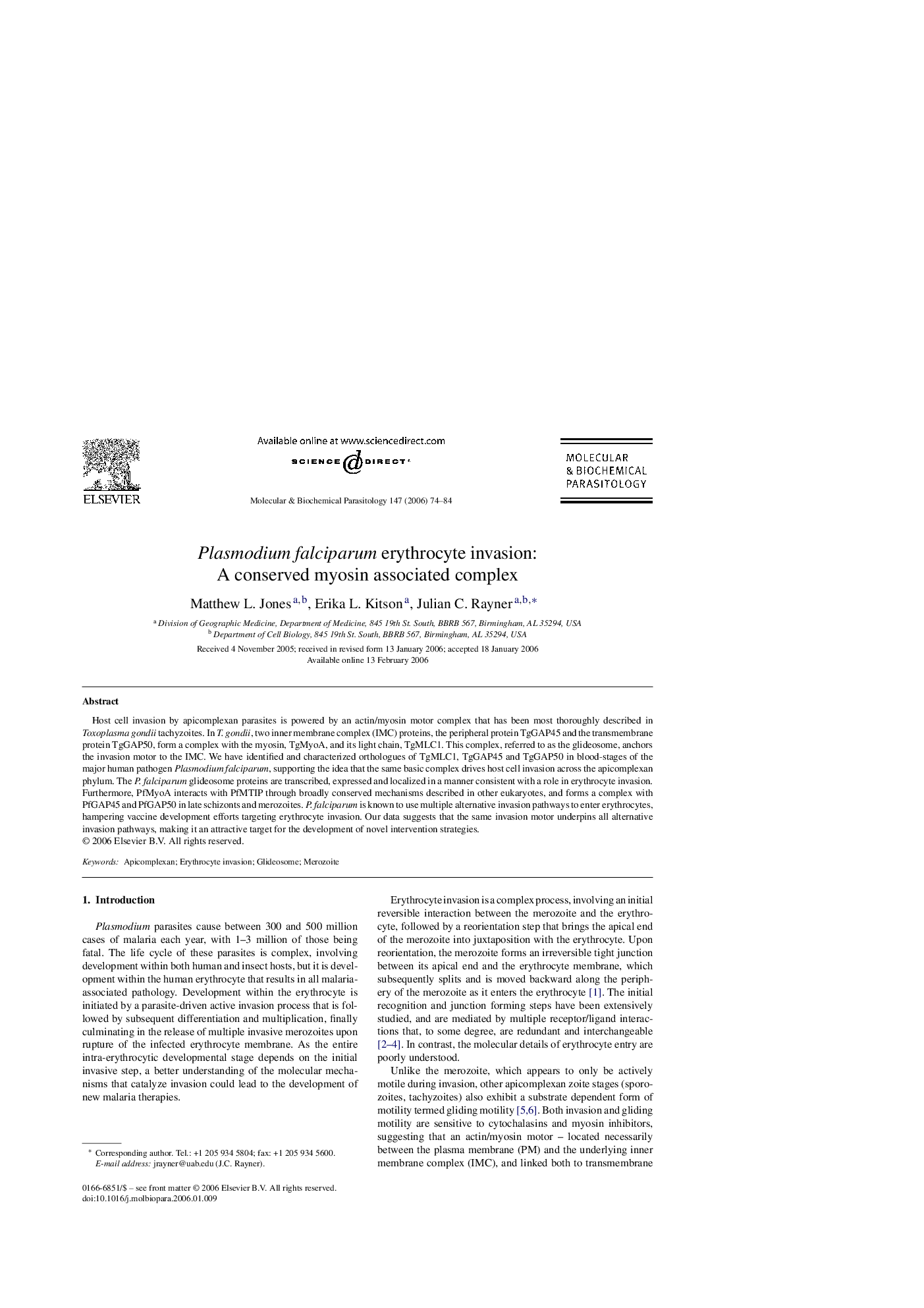| Article ID | Journal | Published Year | Pages | File Type |
|---|---|---|---|---|
| 2830465 | Molecular and Biochemical Parasitology | 2006 | 11 Pages |
Host cell invasion by apicomplexan parasites is powered by an actin/myosin motor complex that has been most thoroughly described in Toxoplasma gondii tachyzoites. In T. gondii, two inner membrane complex (IMC) proteins, the peripheral protein TgGAP45 and the transmembrane protein TgGAP50, form a complex with the myosin, TgMyoA, and its light chain, TgMLC1. This complex, referred to as the glideosome, anchors the invasion motor to the IMC. We have identified and characterized orthologues of TgMLC1, TgGAP45 and TgGAP50 in blood-stages of the major human pathogen Plasmodium falciparum, supporting the idea that the same basic complex drives host cell invasion across the apicomplexan phylum. The P. falciparum glideosome proteins are transcribed, expressed and localized in a manner consistent with a role in erythrocyte invasion. Furthermore, PfMyoA interacts with PfMTIP through broadly conserved mechanisms described in other eukaryotes, and forms a complex with PfGAP45 and PfGAP50 in late schizonts and merozoites. P. falciparum is known to use multiple alternative invasion pathways to enter erythrocytes, hampering vaccine development efforts targeting erythrocyte invasion. Our data suggests that the same invasion motor underpins all alternative invasion pathways, making it an attractive target for the development of novel intervention strategies.
